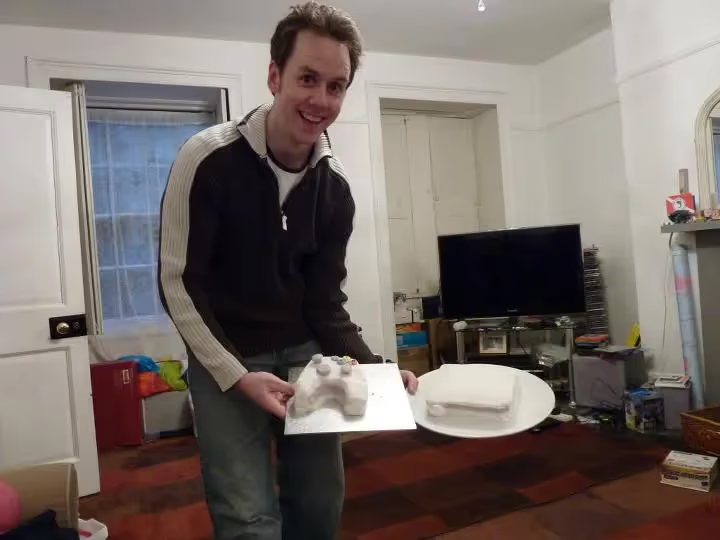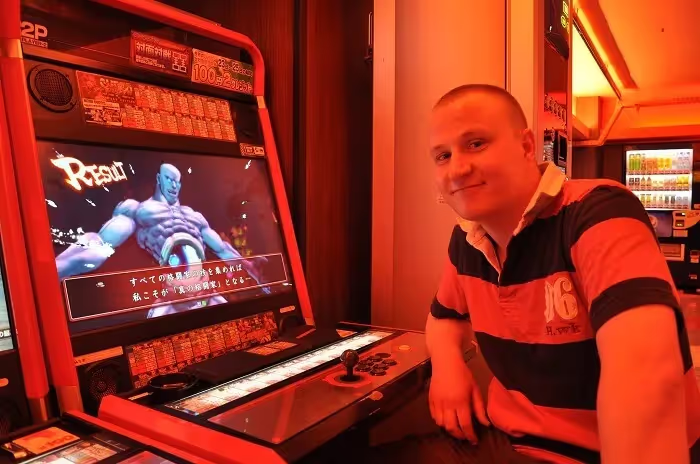Wasteland 3 is one of my favourite games of the year. It also happens to be one of the most frustrating experiences I’ve had with a game in 2020 as well. You might argue that those two points are a little at odds — and you might be right — however even a nuclear amount of bugs couldn’t stop me from wanting to take in every little bit of this game that I could.
This was my first experience with Wasteland, and yet I immediately felt embedded in the world and the story that was unfolding quickly before me. Of course, a crumbling society set in the aftermath of a nuclear war isn’t exactly a new setting. However, there was something about the characters, the way they interacted, and the game’s humour that felt wonderfully familiar, like a warm embrace in an everlasting winter. To say the setting of Wasteland 3 is welcoming definitely sounds strange — sometimes you have to look past the decimation, the bloodshed and the general lack of humanity, you know? But that’s how this felt.
That was especially important as, before this, my experience with top-down, classically-inspired, RPGs was also practically nil. Tactical nuance wasn’t my strong point and I worried that I’d get lost in amongst the bevy of systems that I knew could be key to success in a game like this. However, in spite of my assumptions, I found Wasteland 3 to be surprisingly accessible. There was a little ‘getting to know you’ period in the beginning, but by the time I was ready to venture out into the wider world of Colorado I was more than at ease. That’s not to say the game isn’t deep either. I’m sure plenty of people would scoff at my brutish way of playing and the devil may care attitude I showed in the first few hours of the game. But I’ve found that to be one of the joys of Wasteland 3, I could play it however I wanted.

That freedom begins with the character creator. In what will have been an undoubtedly familiar sight to fans of the series, your choices here can be incredibly in-depth. Picking everything from standard attributes and specific skills right down to character quirks that affect how these characters play allows for so much experimentation and encourages repeat playthroughs. Of course, you’re also free to choose from pre-built characters as well. Being green behind the ears when it comes to games like this, that seemed a sensible option. I found myself quickly becoming enamoured by my initial pairing — I chose the Punk Lovers, if you’re interested — and the subtle acts of storytelling (such as the pair having two halves of a necklace that offered a specific buff) helped to define these characters from the beginning and has left me so attached to them, even now. The same can’t always be said for the other randomly generated members of my squad later, but they still had bags of personality.
These firm identities do a lot to make up for some otherwise elementary character models. Everyone looks fine though. You can certainly tell who’s who and, again, the solid character development in other key areas — writing, voice acting and direction — more than help to fill in the graphical gaps. Plus, it’s not like the game’s isometric camera allows you to get in your characters faces. Some friends and/or foes do get more up close and personal treatment as talking heads during dialogue sequences and these look great with plenty of detail and animation to go along with their time in the spotlight. However, these occurrences are saved for key characters and are pretty few and far between.
So, having fought through an ambush by the bloodthirsty Dorsey gang that left almost all of the Desert Rangers for dead, the story really begins upon meeting The Patriarch — Saul Buchanan. Buchanan is the man in charge in Colorado, but the state is still saturated with violent gangs. The Rangers have travelled from Arizona to answer the call of The Patriarch, looking for help to deliver his megalomaniacal children back to him and stop them seizing power. If it sounds simple, you know it’s not going to be. And if Wasteland 3 is anything, it’s far from simple.
Starting out with a melee-focussed barbarian with a bad attitude, and his tech-centric partner, plus a colourful cast of characters of my choosing I ventured first into Colorado Springs. A hub world that is densely packed with charm amongst the destruction. This is home, and where your Ranger HQ is stationed. Initially concerned about the scope of the game, with the majority of the first few hours taking place here, I soon discovered how much the game opened up. Once this happened, I was in my element. The environments are super detailed and the best of them feel like a character in themselves, telling their own stories within each room. A particular favourite of mine was the dilapidated 90s mall aesthetic of The Bizarre. This area is coupled with a wider area that’s made up with recycled children’s toys and other assorted brightly coloured ephemera and still it manages to be wonderfully creepy.
As a newcomer, I appreciated the relative linearity of my time with the game too. However, I think I’d be up for some early experimentation on a second run. As the game opened up and I began to explore the world map in my armoured Kodiak vehicle, the diversity in the game's locales became clear. A few of them you’ll spend plenty of time in, others just an hour or two, but they’re all well crafted, multi-faceted, with plenty to explore and go back for. Calls on the radio also led me and my squad into some pretty absurd and unbelievable situations too, so exploration is encouraged and you won’t be sorry or tired of doing so.

I was now becoming more familiar with the citizens who inhabited this iridescent, perpetually snow-covered, state too. Aside from The Patriarch’s children, all of whom would rival Batman’s rogue’s gallery for being varying levels of criminally insane, Colorado also happens to be saturated with gangs and factions. They range from the comically bizarre to outright religious zealots and politically-charged nightmares, or some combination of the three. It’s with these various sects that Wasteland 3 flexes its systems the most. After all, the game offers you enough slack to deal with them however you wish. How do the goals of the cartoonish Mob faction align with yours? Perhaps you’d prefer to leave The Godfishers flying their kites made of human remains to their own devices? Everyone will choose differently and the smaller stories the game tells as you progress will affect your overall story in different ways. Every action has a reaction in Wasteland 3 and whilst min-maxing is likely possible, it’ll be hard to keep all the friendly factions on side.
The feeling of making a choice, one you believe to be just, only for it to backfire in some other way is gutting and satisfying in equal measure. Rarely have I felt a game take almost every decision I make seriously and present me with a genuinely plausible reaction from others. Even your own party will question your decisions. When this happens early on it’s easy to brush off. When it happens towards the endgame I was asking myself some serious questions. Learning that you’ll never be able please everybody is as important in Wasteland 3 as it is in life.
Despite my seemingly haphazard speccing of characters early on, I found myself well equipped for most situations. Talking my way out of trouble or dodging a potentially tedious random battle whilst traversing the overworld map was always satisfying. There’s a surprising amount of fun to being diplomatic. Equally, there’s a charm to telling a character how badly you’re going to kill them only for them to up and leave.
Combat however is a core component of Wasteland 3 and, whilst it took a bit of getting used to, I found it to work pretty well. On standard difficulty, each class of enemies plays fairly similarly. They might be a wave of bandits or a giant robot scorpion, and the only thing that really sets them apart is how much damage they can take and dish out. Still, there’s just enough variety in their attacks and approaches to keep things fresh. I’m not sure I ever want to fight another random group of Drools or huge wave of Gippers again though.

Mechanically speaking, mapping out the movements or attack actions of your six squad members is smooth and the battles play out well. Again, the larger ones take a touch too long, but that’s a very minor nitpick. Digging through some of the menus can be tiresome though, especially early on when you don’t quite know your way around. There’s no doubt that the game will play better using a mouse and keyboard, but inXile has done a great job of making playing on a controller far from awful. I found getting stuck navigating menus is common and not having the accuracy to make commands that you’d have on PC can be frustrating, but efforts have been made to make the game play really well on console. Outside of some poor navigation the only other issue I had was checking the status of my characters. HP and AP (action points) were easy enough to see, but trying to decipher some of the effects my characters were faced with, especially early on, was tough. There is a way to display this more clearly, but it appears to have not been telegraphed too well (or a tutorial prompt didn’t trigger) as I discovered it by accident late on.
The same goes for inventory management, which was again a minor gripe. By the end of my playthrough I had tonnes of things clogging up my inventory that I had hoarded for hours and never used. A bank or locker system at HQ would have been welcome but, at the same time, having so much at my disposal often came in handy when my back was against the wall. That said, I do wish there was a more elegant way of sorting through all of this stuff using a controller.
Wasteland 3 is rife with niggling little issues like this, but they rarely chalk up to being more than minor annoyances and never really affected my time with the game. It helps that relative quality elsewhere suggests that inXile is doing what it can to make this work with limited inputs. Unfortunately, there are so many bigger problems at hand that need addressing. Despite it working smoothly 90% of the time, Wasteland 3 appears to always have a 10% chance to bite the player in the arse whenever it sees fit.
For starters, Wasteland 3 has crashed more times than any other game I’ve played this generation. Blue screen, error codes, the lot. Thankfully, an eager autosave system stops this from being a major problem in terms of progress but it’s mighty annoying. On occasion, it also likes to run horrifically. Now, I have to say, this was very rare. However, the game did drop down to single-digit frames per second during two larger fights, even as far as making the audio stutter. What’s more, on my first day of playing the game the fans on my PS4 Pro went haywire and briefly overheated the system, thankfully with no damage done. I could add a long list of very minor issues to this too: broken animations, repeated voice lines and more, but they’re practically inconsequential next to the other towering issues, and just the kind of thing we’ve come to expect in a game of this size with so many systems stacked on top of one another.

At this point even I’m asking myself how and why I put up with so much during my roughly fifty hours with Wasteland 3. Thankfully, there’s a very simple answer — the writing. Wasteland 3 features some of the best writing and most fleshed out characters I’ve ever experienced in a game ever.
A basic story at its core, and one that will feel very familiar to those who have played previous games in the series or have explored the post-apocalyptic genre before, it’s the smaller stories within Wasteland 3 that make it an absolute gem. I don’t want to spoil anything, because you really ought to make these discoveries yourself. However, every character you interact with seems to be living their own life. From quirky stall holders, to hysterical cult leaders, hilarious Communist robots and eager Ramen enthusiasts, I had to talk to them all and listen to what they had to say. What’s more, their story arcs and intentions are clear. So even when I came face to face with a person or faction I didn’t like, I still understood (to some extent) why they were the way they were. That willingness to play with moral grey areas is key to fiction of this ilk, but rarely have I seen it executed so well.
The fact that the majority of characters are expertly voiced by a vast cast of actors only adds to this. Outside of ‘key’ characters, even hearing NPCs discussing your most recent events (or perhaps their inadequacies in the bedroom) help give the world serious depth and an extra helping of weight to your actions.

I lost myself early on to side quests just to see more of them. These side characters easily steal the show, but that’s not to say that the core cast isn’t pulling its weight either. The Patriarch and his children all make for interesting interactions, and additional squad characters like Marshall Kwon, Lucia Wesson and Scotchmo all had me invested in them by the end. My only gripe is that, very rarely, things could get a little too puerile for my liking, but it never overstepped the mark that much.
So, that answers that then. How can I love a game that is so clearly and frustratingly broken in so many ways? Overall quality. When Wasteland 3 does something well, it really does it well. Rarely have I played a large-scale RPG with such deep and consistently good storytelling, world-building and character development where I was invested in the beginning right until the very end. If you can look past the obvious problems with Wasteland 3 you’ll find an absolute gem of a game. There’s never been a better nuclear wasteland to spend time in.
You can subscribe to Jump Chat Roll on your favourite podcast players including:
Let us know in the comments if you enjoyed this podcast, and if there are any topics you'd like to hear us tackle in future episodes!

.avif)


